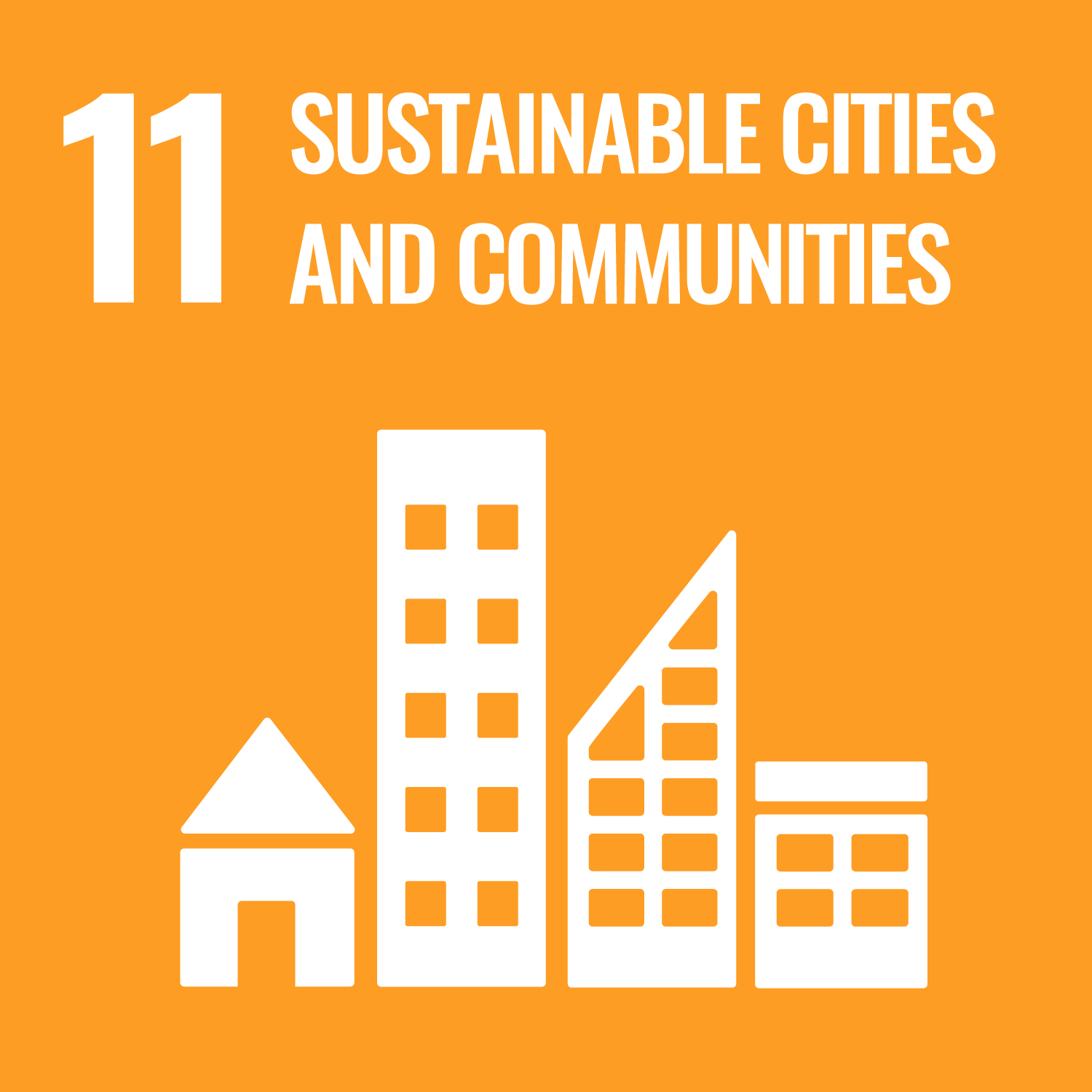About
This website provides monitoring and visualization of Sustainable Development Goal (SDG) 11.3.1 indicators for the Philippines. The map visualization was inspired by Leaflet's Interactive Choropleth Map case study.
What is SDG 11.3.1?
SDG 11.3.1 is one of the indicators under Target 11.3: Inclusive and sustainable urbanization of Sustainable Development Goal 11. SDG 11 focuses on making cities and human settlements inclusive, safe, resilient, and sustainable. On the other hand, Target 11.3 states that "By 2030, enhance inclusive and sustainable urbanization and capacity for participatory, integrated and sustainable human settlement planning and management in all countries" [1]. SDG 11.3.1 specifically measures the ratio of land consumption rate (LCR) to population growth rate (PGR), also known as "LCRPGR" [2]. It aims to achieve a balance between urbanization and preservation of natural resources.
Definition of Terms, from [2]:
"Population growth rate (PGR) is the change of a population in a defined area (country, city, etc) during a period, usually one year, expressed as a percentage of the population at the start of that period. It reflects the number of births and deaths during a period and the number of people migrating to and from the focus area. In SDG 11.3.1, this is computed at the area defined as urban/city.
Land consumption within the context of indicator 11.3.1 is defined as the uptake of land by urbanized land uses, which often involves conversion of land from non-urban to urban functions.
Land consumption rate (LCR) is the rate at which urbanized land or land occupied by a city/urban area changes during a period of time (usually one year), expressed as a percentage of the land occupied by the city/urban area at the start of that time.
Built up area within the context of indicator 11.3.1 is defined as all areas occupied by buildings."
How to Use This Website
This website allows users to visualize and analyze SDG 11.3.1 indicators at various levels of analysis (national, regional, provincial, city/municipal) and for different periods. Users can select the level of analysis and period of interest using the dropdown menus provided on the homepage.
Development Information
This website was developed as part of the creator's doctoral thesis entitled "Spatiotemporal analysis of Earth observation data to map the evolution and changes in land-use efficiencies of urban and other settlement areas" at the Institute of Photogrammetry and Geo-Information (IPI), Leibniz University Hannover, Germany.
Prototype Status
Please note that this website is a prototype, developed to showcase the potential for monitoring SDG 11.3.1 indicators. It may not represent the final version and could contain limited functionality or incomplete features.
Contact Us
If you have any questions or feedback about this website, please contact:
Jojene R. Santillan
Caraga Center for Geo-Informatics & Department of Geodetic Engineering, College of Engineering and Geosciences
Caraga State University, Ampayon
Butuan City, The Philippines
jrsantillan@carsu.edu.ph
References
Acknowledgments
This project acknowledges the following software/plugins:
- Leaflet.js: An open-source JavaScript library for interactive maps. Developed and maintained by the Leaflet contributors under the BSD-2-Clause license. For more information, visit Leaflet.
- Chart.js: A JavaScript library for creating charts and graphs. Developed and maintained by the Chart.js contributors under the MIT license. For more information, visit Chart.js.
- Leaflet Control Geocoder: A plugin for Leaflet that provides geocoding functionality. Developed and maintained by Per Liedman under the MIT license. For more information, visit Leaflet Control Geocoder.
- Turf.js: A JavaScript library for spatial analysis. Developed and maintained by the Turf.js contributors under the MIT license. For more information, visit Turf.js.
This project also acknowledges the following dataset sources:
- OpenStreetMap: Mapping data provided by OpenStreetMap contributors under the Open Data Commons Open Database License (ODbL). For more information, visit OpenStreetMap.
- Built-up and Population data: Global Human Settlement Layer, European Commission Joint Research Center. For more information, visit GHSL - Global Human Settlement Layer.
- Administrative Boundaries: Philippine - Subnational administrative boundaries provided by the Philippine National Mapping and Resource Information Authority (NAMRIA) and Philippine Statistics Authority (PSA) via UNOCHA - Humanitarian Data Exchange. For more information, visit UNOCHA - Humanitarian Data Exchange.
Suggested Citation
- Santillan, Jojene R. (2024). "The Philippine SDG 11.3.1 Indicator Monitoring Dashboard (A Prototype)." Retrieved from https://ccgeoinformatics.github.io/sdg1131ph/.

